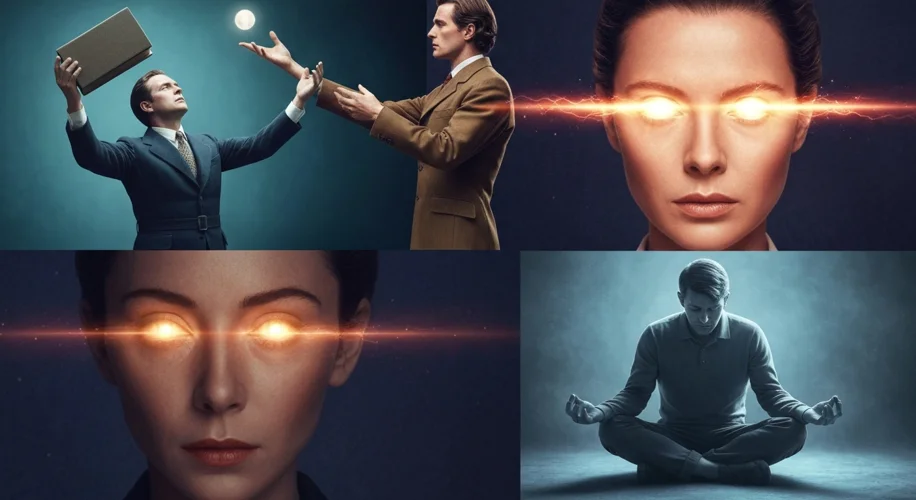The flickering glow of a television screen, the hushed pages of a dog-eared paperback – for many of us, these were our portals to other worlds. And in countless of those worlds, humanity possessed abilities that defied the mundane: minds that could bend spoons with a thought, eyes that could see into the future, or spirits that could leave their bodies to roam unseen. These were the psychic tropes, the enduring fascinations with extrasensory perception (ESP), pyrokinesis, and astral projection that became staples of 20th-century science fiction and fantasy. But where did this seemingly boundless imagination for the paranormal spring from?
To understand this, we must rewind to a time when the world itself felt increasingly mysterious and perhaps, a little terrifying. The early 20th century was a maelstrom of change. The Great War had shattered the illusion of unshakeable progress, leaving a generation grappling with the fragility of existence. In its wake, a profound spiritual and psychological hunger emerged. Many turned to the unseen, the unproven, seeking solace and answers beyond the material realm.
This was the fertile ground upon which the Spiritualist movement had already been sowing seeds. For decades, séances, spirit photography, and automatic writing had captured the public’s imagination, particularly in the late 19th and early 20th centuries. Figures like Helena Blavatsky and her Theosophical Society explored ancient mysticism and occult traditions, suggesting hidden energies and latent human potential. While often relegated to the fringes, these ideas seeped into the broader cultural consciousness, hinting at powers lurking just beneath the surface of everyday reality.

Science, too, played a curious role. The burgeoning fields of psychology and parapsychology, led by figures like J.B. Rhine at Duke University, attempted to scientifically study psychic phenomena. Rhine’s experiments, though controversial, involved testing subjects for telepathy and precognition using specially designed cards. The very attempt to quantify the unquantifiable lent an air of legitimacy, or at least intellectual curiosity, to these previously ethereal concepts.
It was against this backdrop that authors began to weave these nascent ideas into their narratives. Early science fiction, often driven by a sense of wonder and future possibility, found in psychic powers a natural extension of human evolution or alien contact. Think of Olaf Stapledon’s epic philosophical novels, where humanity’s future is shaped by collective consciousness, or the early pulp magazines, filled with tales of mentalists battling sinister forces. These stories weren’t just entertainment; they were exploring anxieties and aspirations of the time.
One pivotal era was the post-World War II period, amplified by the Cold War. The scientific advancements of the war – radar, atomic power – demonstrated humanity’s capacity for incredible, and terrifying, innovation. This era saw a surge in interest in psychic abilities as potential new frontiers, perhaps even as weapons or defenses. The idea of mind control, telepathic espionage, or individuals with destructive psychic powers resonated with the geopolitical tensions and the fear of the unknown.

Authors like Alfred Bester, in his groundbreaking novel The Demolished Man (1953), vividly portrayed a future society where telepaths, known as ‘Espers,’ were an integral part of society, capable of detecting lies and crimes. This wasn’t just fantasy; it was a speculative exploration of how such abilities might fundamentally alter social structures and law enforcement. Similarly, Robert Heinlein’s Starship Troopers (1959) featured the ‘Mind’ – a hive mind consciousness that could influence thoughts and actions, touching on themes of collective will and control.
Fantasy literature, too, embraced these concepts, often conflating them with magic. Arthur C. Clarke’s famous dictum, “Any sufficiently advanced technology is indistinguishable from magic,” perfectly encapsulates this crossover. Whether it was a sorcerer manipulating fire with their mind or an alien using telekinesis, the underlying fascination with bending the physical laws of the universe through sheer mental force remained constant.
Even into the latter half of the century, with the rise of comic books and blockbuster films, psychic tropes continued to evolve. The X-Men, for instance, presented a diverse group of mutants whose powers, often including telepathy, telekinesis, and energy manipulation, were a metaphor for societal prejudice and the struggle for acceptance. The Star Wars saga introduced the Force, a mystical energy field that granted Jedi and Sith their extraordinary abilities, blurring the lines between magic, destiny, and mental discipline.

The enduring appeal of these psychic tropes lies in their ability to tap into fundamental human desires: the longing for extraordinary abilities, the wish to understand the unknowable, and the hope that consciousness itself holds untapped power. They offered escapism, yes, but also a lens through which to examine our own potential, our fears, and the very nature of reality. From the séances of the early 1900s to the interstellar battles of 20th-century fiction, the psychic spark ignited by cultural anxieties and scientific curiosities continues to burn brightly, shaping the stories we tell ourselves about who we are and what we might become.

